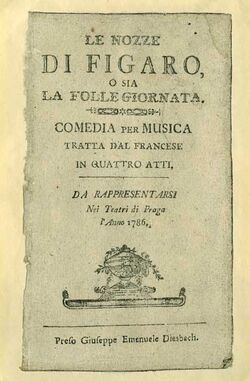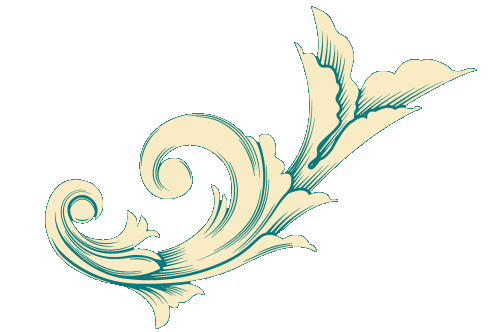| Le Nozze di Figaro | |
|---|---|
 Le Nozze Di Figaro Poster | |
| Composer | Wolfgang Amadeus Mozart |
| Librettist | Lorenzo Da Ponte |
| Premiere | 1786, May 1 Burgtheater, Venice |
| Language | Italian |
| Acts | 4 |
Le nozze di Figaro, ossia la folle giornata (The Marriage of Figaro, or The Day of Madness), K. 492, is an opera buffa (comic opera) composed in 1786 in four acts by Wolfgang Amadeus Mozart, with a libretto in Italian by Lorenzo Da Ponte, based on a stage comedy by Pierre Beaumarchais, La folle journée, ou le Mariage de Figaro (1784). Beaumarchais's earlier play The Barber of Seville had already made a successful transition to opera in a version by Paisiello. Although Beaumarchais's Marriage of Figaro was at first banned in Vienna because of its licentiousness, Mozart's librettist managed to get official approval for an operatic version which eventually achieved great success.
Composition[]
Roles[]
The voice types which appear in this table are those listed in the original libretto. In modern performance practice, Cherubino is usually assigned to a mezzo-soprano (sometimes also Marcellina), Count Almaviva to a baritone, and Figaro to a bass-baritone.[1] Mozart (and his contemporaries) never used the terms "mezzo-soprano" or "baritone". Women's roles were listed as either "soprano" or "contralto", while men's roles were listed as either "tenor" or "bass". Many of Mozart's baritone and bass-baritone roles derive from the basso buffo tradition, where no clear distinction was drawn between bass and baritone, a practice that continued well into the 19th century. Similarly, mezzo-soprano as a distinct voice type was a 19th century development.[2] Modern re-classifications of the voice types for Mozartian roles have been based on analysis of contemporary descriptions of the singers who created those roles and their other repertoire, and on the role's tessitura in the score. Changes in role assignment can also result from modern preferences for contrasts in vocal timbre between two major characters, e.g. Fiordiligi and Dorabella in Così fan tutte. Both roles were written for sopranos, although the slightly more low-lying role of Dorabella is now often sung by a mezzo.[3]
| Role | Voice type | Premiere cast, 1 May 1786 (Conductor: W.A. Mozart) |
|---|---|---|
| Count Almaviva | baritone | Stefano Mandini |
| Countess Rosina Almaviva | soprano | Luisa Laschi |
| Susanna, the countess's maid | soprano | Ann Storace |
| Figaro, personal valet to the count | Bass-baritone | Francesco Benucci |
| Cherubino, the Count's page | soprano | Dorotea Bussani |
| Marcellina | soprano | Maria Mandini |
| Bartolo, doctor from Seville, also a practising lawyer | bass | Francesco Bussani |
| Basilio, music master | tenor | Michael Kelly |
| Don Curzio, judge | tenor | Michael Kelly |
| Barbarina, Antonio's daughter | soprano | Anna Gottlieb |
| Antonio, the Count's gardener, Susanna's uncle | bass | Francesco Bussani |
| Chorus of peasants, villagers, and servants | ||
Plot[]
Overture[]
Act 1[]
Act 2[]
Act 3[]
Act 4[]
References[]
- Notes
- Sources
- Budden, Julian (1984). The Operas of Verdi, Volume 1: From Oberto to Rigoletto. London: Cassell. ISBN 0-304-31058-1
| This page uses Creative Commons Licensed content from Wikipedia (view authors). |
